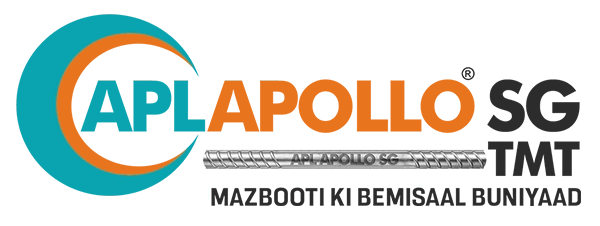When it comes to construction safety, most people focus on TMT bar grades like Fe 500, Fe 500D, or Fe 550D – but there’s another equally crucial factor that often gets overlooked: the diameter of the TMT bar.
Just like the right grade ensures strength and flexibility, the right diameter ensures the structure’s load-bearing capacity and long-term durability. Choosing the wrong size can mean overspending on steel or, worse, compromising the building’s safety.
How Diameter Affects Load-Bearing Capacity
Every TMT bar diameter is designed to handle a specific type of load and stress. A thinner bar, like 8mm, can be perfect for light structural work, while thicker bars, like 25mm, are built to carry massive loads in heavy-duty projects.
The science behind it:
- A larger diameter bar has greater cross-sectional area, meaning it can resist more force without bending.
- A smaller diameter bar offers better flexibility but is not suited for heavy loads.
In short – the wrong diameter can lead to cracks, bending, and reduced structural life.
When to Use Different TMT Bar Sizes
Here’s a quick diameter selection guide based on real-world applications:
Diameter | Common Uses |
8mm | Stirrups, flooring, small load residential work |
10mm | RCC for small houses, beams with light load |
12mm | Residential building columns & beams |
16mm | Multi-storey building columns, heavy slabs |
20mm | Bridges, industrial structures |
25mm | Flyovers, dams, and other heavy infrastructure projects |
Common Mistakes Contractors Make
Even experienced contractors sometimes miscalculate bar thickness requirements, leading to:
❌ Overuse of thicker bars – increases cost unnecessarily without improving performance for lighter structures.
❌ Underuse of diameter – leads to poor load distribution, bending, or even structural failure.
❌ Ignoring load calculations – relying only on “rule of thumb” instead of structural engineering analysis.
Real-Life Example: Residential vs. Flyover Construction
- Residential Building:
For a two-storey home in Agra, engineers used 12mm bars for columns and 8mm bars for stirrups. This provided adequate strength at an optimal cost. - Flyover Project:
In a Mathura flyover project, 25mm bars were chosen for the main framework to bear extreme vehicle load and vibration stress – anything smaller would compromise safety.
Linking Diameter & Grade for Maximum Safety
Diameter alone isn’t the full story – the TMT bar grade (Fe 500, Fe 500D, Fe 550, Fe 550D) also impacts the strength-to-flexibility ratio.
💡 Learn more in our complete guide to TMT bar grades here: [Choosing Between Fe 500, Fe 500D, Fe 550, and Fe 550D – A Builder’s Guide]
By combining the right grade with the right diameter, you ensure your structure is both safe and cost-effective.
Why SG Mart Limited is Your Trusted TMT Partner
At SG Mart Limited, we supply APL Apollo SG TMT Bars in all popular diameters – 8mm, 10mm, 12mm, 16mm, 20mm, and 25mm – across Fe 500, Fe 500D, Fe 550, and Fe 550D grades. Whether you’re building a home, a commercial complex, or an industrial project, we’ll guide you in selecting the perfect combination of diameter and grade.
Contact us today for expert advice and the best prices in the market.

Pingback: Global Steel Trends 2025: How Dual Supply Chains Will Reshape India’s Construction Industry - APL Apollo SG